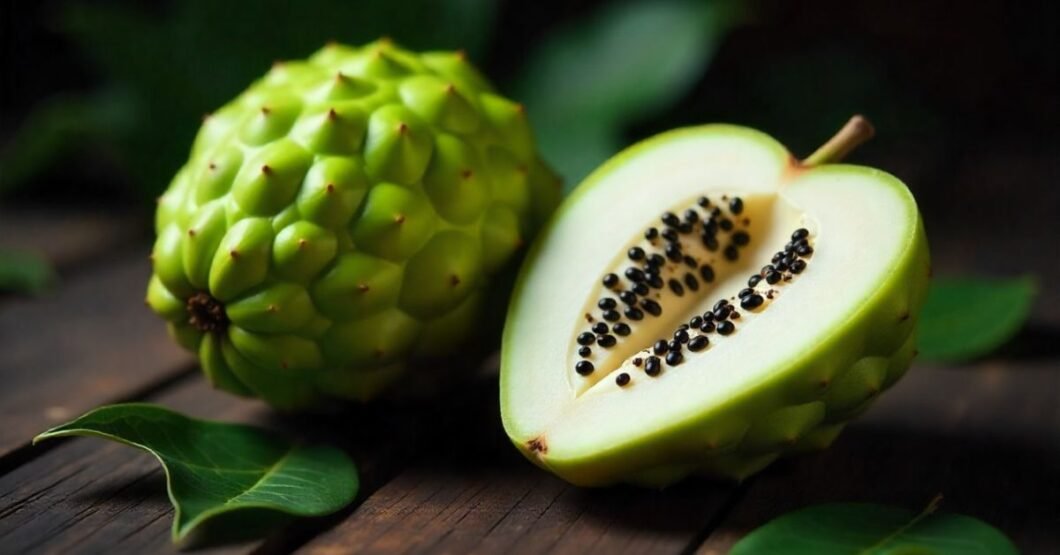Introduction
In the era of superfoods and sustainable agriculture, rare fruits are gradually becoming the center of attention and so are the people who are related to them. One of them is the cherimolier, or those who raise cherimoya fruit, which, to some, has been termed the custard apple, in consideration of its wholesomely tropical flavor.
Cherimoyas are seeing their way out of niche orchards into organic shops and health-conscious menus as the world markets show huge demand on exotic, nutrient-rich fruit. However, growing these fragile fruits is still based on human skills and efforts by relevant persons branded as cherimoliers that are knowledgeable in their biological peculiarities, climatic needs, and cultivation methods.
This Manual covers how the cherimolier fits in 2025, cherimoya crop science, and agronomic practices that are towards sustainability. Well-suited to food enthusiasts, would-be producers, technology developers, and those investigating sustainability, this article combines the fields of botany, market trend, and new technologies to create a profile of a tradition-laden but future-forward career.
We will also contrast the industry trends and present some figures on the overall growth of cherimoya cultivation in the world and deconstruct the changes occurring in production patterns due to the new tools introduced through internationally based cherimoliers.
What is a Cherimolier?
A cherimolier is a farmer who grows the Andean tropical fruit, cherimoya (Annona cherimola). The job demands that one understands the practice of plant care, pest control, harvesting, and preservation after the harvest.
Although people do not extensively use the term in daily conversation, it has cultural and agricultural significance in Peru and Ecuador as well as Spain and some regions in California where cherimoya trees are grown both locally and for export.
Areas of Important Skills a Cherimolier:
- The method of hand-pollination and pruning
- Microclimate of tropical fruit
- Dealing with such pests as mealybugs and lacewings
- Harvesting at the best sugar-acid balance
Featured Snippet Tip:
What is a Cherimolier?
Cherimolier means one who raised cherimoya fruit, the skills needed, isins tropical horticulture.
A Brief Introduction to the Cherimoya Fruit
The description of the taste similar to a mixture of banana, pineapple, and mango has even been repeated numerous times to the extent that one can come across the cherimoya fruit labeled as banana, pineapple and mango mixed. It has a creamy firm texture with a sweet taste with slight tartness hence making it a favorite in health-friendly diets.
Botanical Characteristics:
- It belongs to the Annonaceae family.
- Grows on the small semi-deciduous trees.
- Height: ~6-9m; ready to harvest after approximately 3 years.
Nutrient Snapshot (Per 100g of Fruit):
| Nutrient | Value |
| Calories | 75 kcal |
| Vitamin C | 20 mg |
| Potassium | 287 mg |
| Fiber | 3 g |
| Sugar (Natural) | 14 g |
Cherimoya now features in the current functional diet because it is a low-glycemic, gut-friendly fruit.
Where Cherimoyas Grow Best: Climate & Soil Demands
Cherimoyas are difficult to grow. The trees grow in variable tropical and subtropical, frost-free and can be planted at 800 2,000 meters above sea level frequently located in the peaks of the Andes or around the same level in Southern Europe or North America.
Optimal Conditions:
- Temperature Range: 18-25 o C (64 o 77 o F)
- Yearly rainfall: ~900-1,200mm Rainfall
- Soil: Sandy, well-drained, slightly acidic (pH 6 7)
- Light: Full sun, sheltered when this sound is very strong
Latin America is the top Region in Terms of Production:
- Ancash, Cajamarca Peru
- Spain (Andalusia, primarily Granada & M liga)
- California (Ventura counties, San Diego)
Soil-Type Performance Comparison:
| Soil Type | Suitability Score (/10) | Notes |
| Sandy Loam | 9 | Excellent drainage |
| Clay Loam | 6 | May require raised beds |
| Rocky Soil | 3 | Poor root establishment |
The Cherimoliers of 2025 can typically consult with mini-climate modeling applications to track the long term feasibility of new orchards.
Modern Agricultural Techniques Used by Cherimoliers
There is hand pollination required in the cherimoya-tree, at least in regions where the native range of the pollinator is not that of the tree. The modern methods are currently reinforcing or replacing traditional tools and data systems.
Advanced Practices:
- Optimizing Hand Pollination on the basis of tracking time-of-day
- Conservation of water by sensor-based irrigation
- Tree netting to avoid splitting fruit is used.
- Visual canopy monitoring by drone
Professional Insight:
Predictive agricultural modeling is likely to increase yield by 12-15%, as demonstrated in recent 2025 research by the Instituto de Investigaciones Agrarias in Peru, whereas intuition stood on its own.
The current Cherimoliers now use intuition, generation knowledge and data in order to be consistent in quality and yields of fruits.
Challenges in Cherimoya Farming Today

Even though it is attractive, cherimoya commercial production is still labor-intensive and is subject to numerous biological issues.
Major Challenges:
- Being prone to soil borne disease such as root rot.
- Exposure to weather fluctuations (heat-waves or surprise frost).
- Tender fruit cannot take kindly to being bruised easily, making mechanization nearly impossible.
- Weak local demand in non-traditional markets.
Recurring weather pattern changes particularly in Europe and California dictate that cherimoliers need to be even more proactive than in the past with frost protection, drip irrigation, and shade planning in orchards.
In a report done in 2025 by the UN Food and Agriculture Organization, it was pointed out that there was a need to provide crop insurance and government-funded education programs to exotic fruit farmers on how to deal with the volatility of the climate.
Cherimoya Global Demand and Export Market
The demand for superfruits in the world has provided cherimoya with more exposure in the latest five years. Spain has remained the biggest exporter mainly to markets in Europe, but Peru and Chile insist on domestic consumption and niche markets.
Leading Importers:
- Germany
- Netherlands
- UAE
- United Kingdom
| Year | Global Market Demand for Cherimoya (est.) |
| 2020 | $120 million |
| 2025 (est.) | $185 million |
Driving Factors:
- Health-conscious consumers
- Nutrient profiled and high-fiber characteristics
- need of non-GMO, organic commodities
To internationalise, the Cherimoliers now frequently partner with export co-ops (sometimes formed around blockchain to improve the traceability and channel logistics hubs).
The Role of Organic Farming for Cherimoliers
Most of the current cherimoliers sell their products on organic certification basis which center on the amendments of the soil which is chemical free, natural pest control and use of permaculture.
Sustainable Approaches used:
- Whitefly whiteflies neem oil sprays
- Banana peels and alfalfa- based compost
- Testing marigold and other companion plants as a pesticide-free method to repel insects
Other cherimoyas are more likely to command a 20-40 percent premium at US and EU retail outlets as indicated by 2025 WholeFoods Global Procurement data.
QR-code-codebased labeling of products has made consumers transparent and has allowed cherimoliers to display:
- Farm location
- Growth method
- Harvest date
Smart Farming Tools and Data-Driven Cultivation
The use of precision agriculture tools is becoming significant in Cherimoliers as it will help increase productivity and combat climate issues and scale the cost of labor.
Instruments of modern use:
- Bluetooth soils monitors
- Leaf health Canopy RGB image scanners
- Automated weather alerts that are integrated with irrigation controller
Example:
- AgriPulse Cherimoya Suite, a mobile based orchard management application, developed by a Peruvian-Spanish based agro start-up, is being launched in the year 2025, and it is allowing farmers to reduce water consumption by an estimated 22 percent and predict better harvests.
The innovations enable the small-scale cherimoliers to remain competitive even in the fluctuation of the environment and the market.
Nutritional Profile of Cherimoya and Its Health Benefits
In addition to being a farmer, the rising demand of cherimoya is also a result of its anti-inflammation, immune-strengthening, or gut-calming functions.
Significant nutrition facts (per cup):
- Vitamin C: 60 percent of the specific dose in the day.
- Potassium: Promotes the heart health
- Antioxidants: counter free radicals
- Fiber: Increases satiety and digestion
In 2025, functional applications to health care:
- Applied in cold pressed juices
- Cherimoya extract as nutraceuticals Cherimoya Cherimoya contains a variety of nutrients, including an assemblage of vitamins and minerals.
- Smoothie and supplement powdered form available
Cherimoya is a new popular energizing fruit among health bloggers and in such sites, as Healthline, as the definitive fruit to use in clean living.
Future Outlook for Cherimoliers in Sustainable Agriculture
With a trend towards agro-ecology, carbon-conscious eating and genetic diversification, cherimoliers are in the front line of a revolution in the world of fruit growing.
Trends Predicted (2025-2030):
- Cherimoya micro-farms networked by AI
- Better exports through more investment in cold-chain logistics
- Gene-editing project on climate-resistant cherimoya cultivars
Cherimoya farms are already starting to be invested in by investment organizations interested in regenerative agriculture, especially those that are located in Peru and Spain. This not only makes cherimoliers the growers but custodians of biodiversity against the global monoculture risks.
FAQs
What does a cherimolier do?
A cherimolier cultivates cherimoya fruit, specializing in tropical horticulture practices.
Is cherimoya a superfruit?
Yes, it has lots of fiber, Vitamin C and antioxidants-nutrient dense, healthy.
Where can I buy cherimoya in 2025?
In cities all over the world, you can find it in most organic grocery stores, in health food markets, and specialty fruit vendors.
Can cherimoya be grown in the US?
Yes, especially in California and Hawaii, where the climate matches tropical-subtropical conditions.
How long does cherimoya take to mature?
Generally, 3–4 years from planting to harvest-ready fruit under optimal conditions.
Conclusion
The world might be zooming towards automation and big factory production, however, it is still based on people with skills who are nurtured, patiently and ecologically. The less perfectly understood cherimolier has no less an object than to embellish and sweeten one of the most delicate and sweetest of the productions of nature, the cherimoya.
By 2025, the appropriate climate data, traditional knowledge, and agro-innovation makes the cherimoliers successful, as niche producers as well as global contributors, to sustainable agriculture.
Want to be able to grow cherimoya or help out small-scale fruit farms in your neighborhood? Begin searching within local farmer networks or farmers associations in your town.
Visit the rest of the site for more interesting and useful articles.




